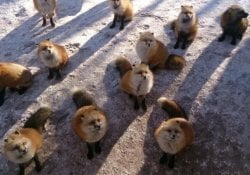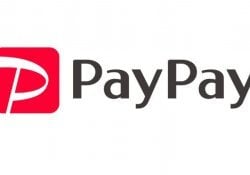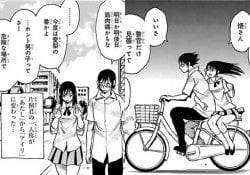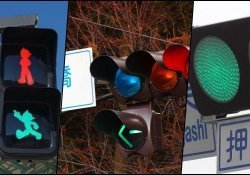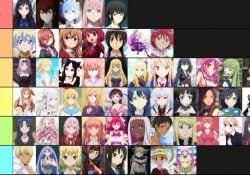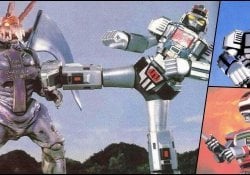In this article, we are going to see a Definitive Guide to Hiragana and Katakana, you will get to know the basics of the Japanese alphabet and I will even recommend the real definitive guide at the beginning of this article. That's right! Kana: Definitive Guide to Hiragana and Katakana!
Índice de Conteúdo
What is Hiragana and Katakana?
Have you ever wondered what the Japanese alphabet looks like? How does it work? The Japanese language has a syllabic script, where letters are actually syllables that form words.
These syllables are written using Hiragana, a set of 46 simple ideograms that form the 109 syllables in the Japanese language.
The problem is that the Japanese Alphabet doesn't just have Hiragana, there is another set of ideograms that form 109 syllables called Katakana.
There is also a huge number of more complex ideograms that are usually from 1 to 3 syllables and form whole words called Kanji. Let's get to know these Japanese alphabet writings now.
The good thing about the Japanese alphabet is that because it is made up of syllables, it increases reading and speaking speed. Another very good thing about Japanese is that the pronunciation of syllables doesn't change like Portuguese where the S has a Z sound and things like that.
There are no accents other than Dakuten which is actually a complete alteration of the lyrics.
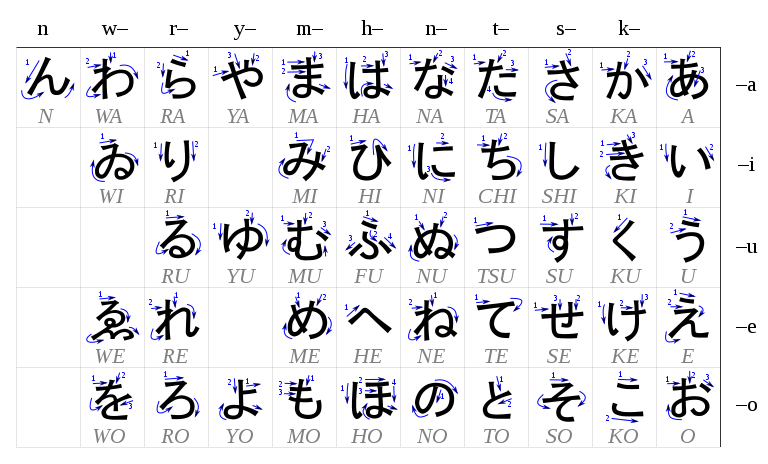
Types of writing in the Japanese alphabet
Hiragana - 平仮名: It is used for all words for which there is no kanji, or it exists but is rarely used. It is also used to replace the kanji and in the endings of verbs and adjectives. (あいうえおかきくけこ)
Katakana - 片仮名: Katakana is used to write common and proper names of foreign, mainly Western origin, onomatopoeias, technical words, slang and scientific names of plants and animals. (アイウエオカキクケコ)
Kanji - 漢字: They are ideograms of Chinese origin, which are used in numerous Japanese words. We won't go into details about kanji in this article.
Romaji – What we call Japanese written using our Roman letters. It is the transliteration of the Japanese alphabet into ours.

Connect! Hiragana = あいうえお
Katakana = アイウエオ
Kanji = water, fire, earth, wind, sky!
How did 46 letters become 109 sounds?
The truth is that there are 46 drawings that form syllables, but there are elements used as diacritics in Japanese, responsible for changing the sound of the letter. Don't worry, there are few:
- Handakuten or maru –゜– a small circle, similar to the degree symbol. (は = ぱ);
- Dakuten or ten-ten – ゛– Looks like a quotation mark. (か = が);
- Sokuon (っ) -a small tsu . Serves to extend the sound between 2 hiragana. (だって);
- Ya Yu Yo – small, used to make sounds like: Kya Nya, etc. (ぴゅ/ニャ);
Each of them can modify the Hiragana sound in a different way. In the list of characters below you will find the usage of Handakuten and Dakuten. You will also see combinations with Hiragana.
We recommend reading: Dakuten and handakuten – Japanese quotes
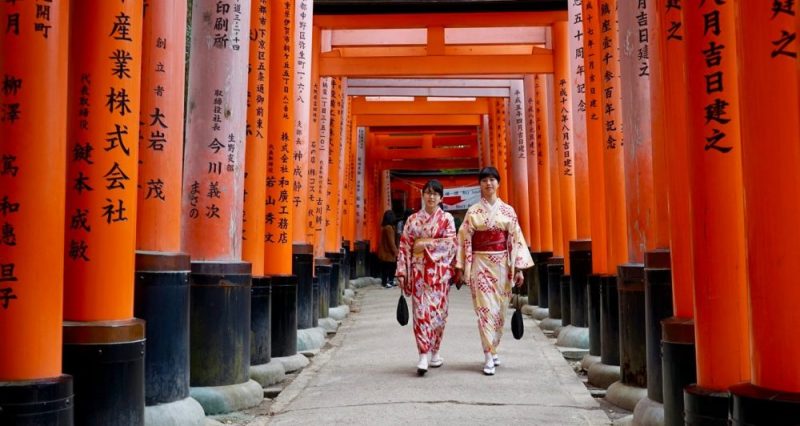
The article is still halfway through, but we recommend also reading:
Questions about Hiragana and Katakana
Over the years, Suki Desu has written numerous articles answering questions about the Hiragana and Katakana alphabet. I decided to briefly summarize these doubts and add the articles that address them in detail.
What is Hiragana and Small Katakana for?
Small hiragana were often used in syllables like wi (うぃ), we (ウェ), vi (ヴィ), ve (ヴェ), je (じぇ), fa (ファ) and others. Nowadays these syllables are rarely used, leaving only the use of the small TSU [っ] used to lengthen syllables.
The small tsu is called Sokuon [促音] which indicates a double sound of a consonant or a pause or cut in the pronunciation. Unfortunately, only kana アイウエオあいうえどうつやゆよ can get small.
For more information, read the article: How to use and type small Hiragana and Katakana
Can I use Hiragana and Katakana in the same word?
We know that the alphabets are written together, but in different words except the characters with hiragana. And the Katakana? Can it be mixed into a hiragana word or vice versa? Yes, but it's rare and impossible and usually breaks the rules of Japanese.
There are some verbs created that mix katakana with a hiragana ending, as in the case of going to Starbucks that says “Sutabaru” [スタバる]. Not to mention that a single word can be written with either hiragana or katakana.
For more information, read the article: Can I use hiragana and katakana in the same word?
Kanji or Hiragana? When to know Which to use?
There is no way to know how or which to use. If the word is usually written with Kanji and Hiragana, it's up to you how to choose. All words can be written with Hiragana or Kanji, except those that are of foreign origin or verbs and adjectives that use both spellings in their composition.
Still, you may be able to write a verb or adjective entirely in hiragana, without the kanji, but you can't write it entirely in kanji. It all depends on the context, the words of the text, the message you want to convey, there is no right or wrong.
The purpose of Kanji is to prevent people from getting lost when reading a word, because of the numerous words with the same hiragana script. By studying Japanese you will understand which words are usually written in hiragana, even though there is kanji. Through reading and contacting the language, you will understand how words are natively written by the Japanese.
How to distinguish Similar Katakana? [シンツソ]
Many when learning katakana get confused with [シンツソ]. The truth is, only time and practice can help you discern these diabolical similarities. Some apply the following tip to help memorize:
- シ – Shi is a girl looking into tsu's eyes
- ツ – Tsu is a boy looking down
- ソ – Flashing “so“
- ン – Thinking about it “NNNNN… I don't think so.”
- ノ - Closed eyes "noooooooooooooo!"
We recommend reading our article: Distinguish Similar Katakana
Hiragana Table – ひらがな
| あ a | い i | う u | え and | お o |
| か ka | き ki | く ku | け what | こ ok |
| が ga | ぎ gi | ぐ gu | げ ge | ご ir |
| さ sa | し This word is untranslatable. | す your | せ if | そ only |
| ざ za | じ ji | ず zu | ぜ ze | ぞ zo |
| た ta | ち chi | つ tsu | て te | と para |
| だ da | ぢ ji | づ zu | で in | ど do |
| な na | に no | ぬ naked | ね ne | の no |
| は ha | ひ Hello! | ふ fu | へ hey | ほ ho |
| ば ba | び bi | ぶ boo | べ ok | ぼ bo |
| ぱ pa | ぴ pi | ぷ pu | ぺ foot | ぽ dust |
| ま ma | み mi | む mu | め me | も mo |
| や ya | ゆ yu | よ yo | ||
| ら ra | り laughs | る ru | れ re | ろ ro |
| わ wa | を wo | ん n/m |
Hiragana Japanese alphabet combinations
| きゃ kya | きゅ kyu | きょ kyo |
| ぎゃ gya | ぎゅ gyu | ぎょ gyo |
| しゃ sha | しゅ shu | しょ sho |
| じゃ ja | じゅ ju | じょ jo |
| ちゃ cha | ちゅ chu | ちょ cho |
| にゃ nya | にゅ nyu | にょ nyo |
| ひゃ hya | ひゅ hyu | ひょ hyo |
| びゃ bya | びゅ byu | びょ byo |
| ぴゃ pya | ぴゅ pyu | ぴょ pyo |
| みゃ mya | みゅ myu | みょ myo |
| りゃ rya | りゅ ryu | りょ ryo |
Katakana table – カタカナ
| ア a | イ i | ウ u | エ and | オ o |
| カ ka | キ ki | ク ku | ケ what | コ ok |
| ガ ga | ギ gi | グ gu | ゲ ge | ゴ ir |
| サ sa | シ This word is untranslatable. | ス your | セ if | ソ only |
| ザ za | ジ ji | ズ zu | ゼ ze | ゾ zo |
| タ ta | チ chi | ツ tsu | テ te | ト para |
| ダ da | ヂ ji | ヅ zu | デ in | ド do |
| ナ na | ニ no | ヌ naked | ネ ne | ノ no |
| ハ ha | ヒ Hello! | フ fu | ヘ hey | ホ ho |
| バ ba | ビ bi | ブ boo | ベ ok | ボ bo |
| パ pa | ピ pi | プ pu | ペ foot | ポ dust |
| マ ma | ミ mi | ム mu | メ me | モ mo |
| ヤ ya | ユ yu | ヨ yo | ||
| ラ ra | リ laughs | ル ru | レ re | ロ ro |
| ワ wa | ヲ wo | ン n/m |
Katakana Japanese alphabet combinations
| キャ kya | キュ kyu | キョ kyo |
| ギャ gya | ギュ gyu | ギョ gyo |
| シャ sha | シュ shu | ショ sho |
| ジャ ja | ジュ ju | ジョ jo |
| チャ cha | チュ chu | チョ cho |
| ニャ nya | ニュ nyu | ニョ nyo |
| ヒャ hya | ヒュ hyu | ヒョ hyo |
| ビャ bya | ビュ byu | ビョ byo |
| ピャ pya | ピュ pyu | ピョ pyo |
| ミャ mya | ミュ myu | ミョ myo |
| リャ rya | リュ ryu | リョ ryo |
Videos to decorate hiragana and katakana
Qual a maneira e a forma certa de escrever o alfabeto japonês? Como irei decorar tudo isso? Primeiramente pedimos que foque-se em memorizar o significado desses caracteres. Também preparamos alguns vídeos para ajudar nessa tarefa;
For this, observe this table several times and try to write what you are reading using the game below, try to get it right as much as possible. To access this tool to learn the Japanese alphabet: Click here.
The video below teaches the pronunciation of Hiragana and also helps to memorize it:
The Video below from our channel teaches you how to write the Japanese alphabet Hiragana:
What do you think of the Japanese alphabet? Already learned? We appreciate the comments and shares that help a lot.

